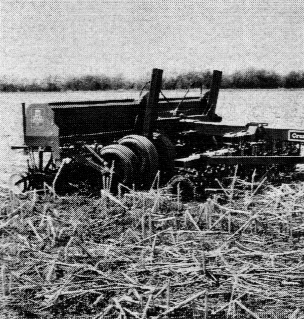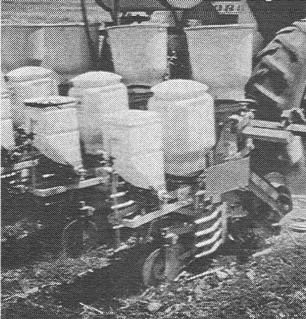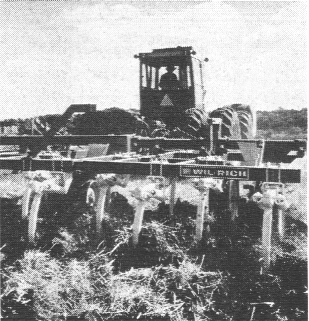
CT-1

As its name implies, conservation tillage conserves soil by reducing erosion. In the Midwest, erosion by water is the primary concern, whereas western regions of the country are more susceptible to wind erosion.
Soil erosion removes the productive layer of topsoil, reducing crop yields and land value. Soil removed from fields eventually ends up as sediment in streams, rivers, or lakes. Sediment collects in surface waters, reducing their water-holding capacity. Some crop nutrients and pesticides attach to soil particles and are carried and deposited in waterways along with the soil.
Factors affecting soil loss by water erosion include:
Conventional tillage, such as moldboard plowing, leaves the soil surface bare and loosens soil particles, making them susceptible to the erosive forces of wind and water. Conservation tillage practices reduce erosion by protecting the soil surface and allowing water to infiltrate instead of running off. Table 1 shows the relationship between residue cover and soil loss. The Conservation Technology Information Center (CTIC) defines conservation tillage as any tillage and planting system that leaves at least 30 percent of the soil surface covered by residue after planting.
Residue Soil Cover Runoff Loss --------------------------------- % % of rain tons/acre -------------------------------- 0 45 12.4 41 40 3.2 71 26 1.4 93 0.5 0.3 ---------------------------------
Conservation tillage practices are grouped into three types: no-till, ridge- till, and mulch-till. Keep in mind that no one conservation tillage method is best for all fields. Decisions should be based on the severity of the erosion problem, soil type, crop rotation, latitude, available equipment, and management skills. Before adopting a conservation tillage system, first seek advice from:

No-till leaves the soil undisturbed from harvest to planting. Planting is done in a narrow (usually 6 inches or less) seedbed or slot created by coulters, row cleaners, disk openers, in-row chisels, or roto-tillers. A press-wheel follows to provide firm soil-seed contact.
No-till planting can be done successfully in chemically-killed sod, in crop residues from the previous year, or when double-cropping after a small grain. Herbicides are the primary method of weed control, although cultivation may be used for emergency weed control.
Soil conservation results from the high percentage of surface covered by crop residues.

Ridge-till involves planting into a seedbed prepared on ridges with sweeps, disk openers, coulters, or row cleaners. The ridges are rebuilt during cultivation. Except for nutrient injection, the soil is left undisturbed from harvest to planting.
Ridge-till works best on nearly level, poorly drained soils. The ridges speed up drainage and soil warm-up. Cultivation controls weeds along with some herbicides.
Ridge-till systems leave residues on the surface between ridges. Soil conservation depends on the amount of residue and the row direction. Planting on the contour and increased surface coverage greatly reduce soil loss.

Mulch-till uses chisel plows, field cultivators, disks, sweeps, or blades to till the soil before planting. The tillage does not invert the soil but leaves it rough and cloddy. Various chisel points or sweeps attached to the shanks affect the amount of residue cover left on the soil surface.
Fall chiseling should be done to a depth of 8-10 inches, and spring chiseling should be no deeper than 6 inches. Disking or other shallow tillage operation can be used in seed bed preparation. A standard, or tandem, disk does not till as deep and leaves more residue on the surface compared to heavy (offset) disks. Herbicides and/or cultivation control weeds in a mulch-till system.
The effectiveness of mulch-till systems in reducing erosion depends on surface roughness, amount of residue, and tillage direction.
New 11/94
Cooperative Extension work in Agriculture and Home Economics, state of Indiana, Purdue University, and U.S. Department of Agriculture cooperating. H. A. Wadsworth, Director, West Lafayette, IN. Issued in furtherance of the acts of May 8 and June 30, 1914. The Purdue University Cooperative Extension Service is an equal opportunity/equal access institution.